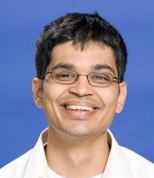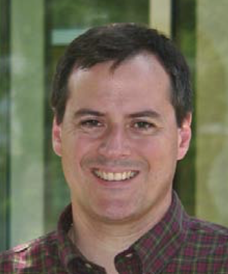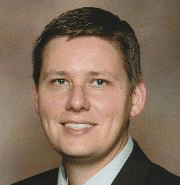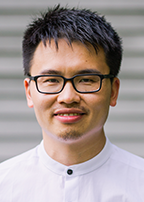 Abstract: In this talk, we present a novel multiscale moving contact line (MMCL) theory, which offers a powerful numerical simulation method for modeling and analysis of dynamic wetting, liquid droplet spreading on solid substrates, and various capillary motion phenomena. In the proposed multiscale moving contact line theory, we couple molecular scale adhesive interaction i.e. the van der Waals type interaction force and the macroscale fluid mechanics to solve droplet motions on solid substrates. In specific, we combine a coarse-grained adhesive contact model with a modified Gurtin-Murdoch surface hydroelasto-dynamics theory and the Navier-Stokes equation in the bulk fluids to formulate the multiscale moving contact line hydrodynamics theory in order to simulate a broader class of colloidal and soft matter physics phenomena, and related chemomechanical problems, such as cell motility, water spider walking, colloid suspension, and gas bubble in water, etc.
Abstract: In this talk, we present a novel multiscale moving contact line (MMCL) theory, which offers a powerful numerical simulation method for modeling and analysis of dynamic wetting, liquid droplet spreading on solid substrates, and various capillary motion phenomena. In the proposed multiscale moving contact line theory, we couple molecular scale adhesive interaction i.e. the van der Waals type interaction force and the macroscale fluid mechanics to solve droplet motions on solid substrates. In specific, we combine a coarse-grained adhesive contact model with a modified Gurtin-Murdoch surface hydroelasto-dynamics theory and the Navier-Stokes equation in the bulk fluids to formulate the multiscale moving contact line hydrodynamics theory in order to simulate a broader class of colloidal and soft matter physics phenomena, and related chemomechanical problems, such as cell motility, water spider walking, colloid suspension, and gas bubble in water, etc.
The advantage of adopting the coarse grain adhesive contact model in the moving contact line theory is that it can levitate and separate the liquid droplet with the solid substrate, so that the proposed multiscale moving contact line theory avoids imposing the non-slip condition, and then it removes the subsequent shear stress singularity problem, which allows the surface energy difference and surface stress propelling droplet spreading naturally.
We have also developed a soft matter model for biological cells that can model actin polymerization and ATP hydrolysis, and retrograde flow in cellular lamellipodia. By employing the MMCL method, we have successfully simulated cell durotaxi over the soft elastic substrates with non-uniform elastic stiffness. By employing the proposed method, we have successfully simulated droplet spreading over various elastic substrates and cell durotaxi over the substrates with non-uniform elastic stiffness. The obtained numerical simulation results compare well with the experimental and molecular dynamics results reported in the literature.
Biographical Sketch: Dr. Shaofan Li is currently a full professor of applied and computational mechanics at the University of California-Berkeley. Dr. Li graduated from the East China University of Science and Technology (Shanghai, China) with a BS degree in 1982; he also holds MS Degrees from both the Huazhong University of Science and Technology (Wuhan, China) and the University of Florida (Gainesville, FL, USA) in 1989 and 1993 respectively. In 1997, Dr. Li received a PhD degree from the Northwestern University (Evanston, IL, USA), and he was also a post-doctoral researcher at the Northwestern University during 1997-2000. In 2000, Dr. Li joined the faculty of the Department of Civil and Environmental Engineering at the University of California-Berkeley. Dr. Shaofan Li is the recipient of IACM Fellow Award [2017]; Distinguished Fellow Award of ICCES [2014]; ICACM Computational Mechanics Award [2013], USACM Fellow Award (2013), A. Richard Newton Research Breakthrough Award [2008], and NSF Career Award [2003]. Dr. Li has published more than140 articles in peer-reviewed scientific journals (SCI) with h-index 43 (Google Scholar), and he is also the author of two research monographs/graduate textbooks.








